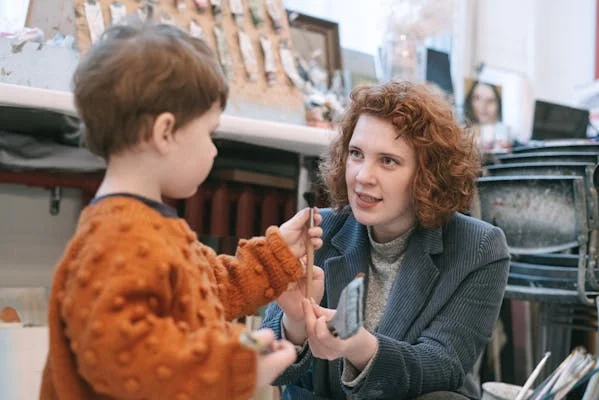A home studio session offers a unique and comfortable setting for creative professionals. Whether you’re a musician, photographer, artist, or content creator, designing an ideal space can enhance your productivity and the quality of your work. In this article, we will explore the key elements that contribute to a successful lifestyle in home studio sessions, focusing on the setup, lifestyle choices, and how to maintain a productive and inspiring environment.
The Growing Trend of Home Studios
With the rise of remote work and digital creativity, the concept of a home studio has gained significant popularity. No longer confined to professional settings, home studios have become a go-to for those seeking a more intimate and flexible workspace. A lifestyle in home studio session allows for personalized touches, ensuring that your space reflects both your professional needs and personal style.
This shift towards at-home creativity also means greater control over your environment. You can craft a space that promotes focus, inspiration, and comfort, all of which are key to fostering creativity and achieving your best work. Whether you’re mixing music, editing photos, or designing digital content, setting up the right home studio is paramount to maintaining a successful lifestyle in a home studio session.
The Key Elements of a Home Studio Setup
When creating a home studio, there are several elements that must be considered to ensure the space is functional and conducive to the work you do. From equipment to ambiance, every detail plays a role in shaping your home studio lifestyle.
1. Equipment: The Backbone of Your Studio
The foundation of any home studio session is the equipment you use. Depending on your profession, this could include microphones, computers, cameras, lighting setups, and soundproofing materials. High-quality tools are essential for creating a professional-grade product, whether you’re recording vocals, filming a video, or editing an image.
- Sound Equipment: For musicians and podcasters, investing in good microphones, headphones, and audio interfaces can significantly improve the sound quality of your recordings.
- Lighting and Cameras: Photographers and videographers will need professional lighting, tripods, and high-resolution cameras to achieve the best shots.
- Computing Power: Regardless of the industry, a fast computer with sufficient storage and processing power is vital for editing and managing large files.
Your equipment choices will depend on your specific needs, but it’s important to choose quality over quantity to maintain a high standard for your home studio session.
2. Lighting: The Secret to a Creative Atmosphere
Lighting is one of the most underrated aspects of any home studio. The right lighting can create an atmosphere that boosts creativity and helps you focus during your session. Natural light is ideal for daytime work, as it keeps your space bright and airy. However, for night-time sessions or those in windowless rooms, you’ll need to invest in soft, adjustable lighting to reduce strain on your eyes and create a cozy, productive atmosphere.
- Ambient Lighting: Soft overhead lighting provides an even and comfortable environment.
- Task Lighting: Desk lamps or adjustable spotlights help illuminate specific areas like your desk or work table.
- Accent Lighting: Colored lights or LED strips can help add personality to the room and inspire creativity.
Designing Your Space for Comfort and Efficiency
A lifestyle in a home studio session isn’t just about the work—it’s also about creating a comfortable space where you can spend hours without feeling fatigued or distracted. Your studio should be a place that balances both productivity and relaxation.
3. Ergonomics: Comfort Matters
Long hours of working in a studio can take a toll on your body, especially if your setup isn’t ergonomic. Invest in a comfortable chair that supports your back and a desk that allows for proper posture. If you’re spending a lot of time standing, consider a height-adjustable desk.
- Chair: A chair with lumbar support will help you maintain a healthy posture and avoid back pain.
- Desk: Ensure your desk height allows your arms to rest comfortably while typing or working.
- Keyboard and Mouse: Consider investing in ergonomic devices to minimize strain on your wrists and hands.
By incorporating these ergonomic features, you can ensure that your home studio is a place where you can work efficiently without physical discomfort.
4. Decor and Personal Touches
Personalizing your space with decor not only makes it more comfortable but also helps to create a positive, inspiring environment. Whether it’s artwork, plants, or sentimental items, surrounding yourself with things that motivate you can elevate the overall experience of your home studio session.
- Artwork and Posters: Display artwork, photographs, or motivational quotes that inspire you.
- Plants: A few indoor plants can brighten up your space and even improve air quality.
- Storage: Shelving or storage units can help organize your tools and materials while adding to the aesthetic of the room.
Creating a space that feels like your own is an essential part of living a productive lifestyle in home studio sessions.
Balancing Work and Relaxation
While it’s easy to get caught up in the productivity side of a home studio session, it’s equally important to integrate moments of relaxation and breaks. Maintaining a balance between work and downtime can improve your focus and keep your creativity flowing.
5. Creating a Break Area
If you have the space, dedicate a small area for taking breaks. This could be as simple as a cozy chair with a good book or a comfortable lounge area where you can unwind. Breaks are crucial for recharging, so don’t neglect this aspect of your lifestyle in a home studio session.
- Comfortable Seating: A soft chair or sofa can provide a perfect spot for a short nap or break.
- Entertainment: Include items like books, a gaming console, or music for your mental refreshment.
6. Sound Control: Creating the Right Acoustic Environment
Sound is a critical factor for many home studio sessions, especially if you’re recording audio or working in a space that’s prone to noise. Acoustic treatments such as foam panels, diffusers, and bass traps can help reduce unwanted noise and improve the sound quality in your studio.
- Soundproofing: Install soundproofing materials on walls, windows, or doors to eliminate distractions from the outside world.
- Acoustic Treatment: Soft furnishings like curtains, carpets, and foam panels can absorb sound and reduce echoes.
Creating a sound-controlled environment is essential for achieving a high-quality audio or visual experience in your home studio session.
Maintaining Your Lifestyle in a Home Studio Session
A key part of a successful lifestyle in a home studio session is maintaining a consistent and organized routine. This will ensure that you’re always prepared to jump into your creative work with minimal distractions.
7. Keeping Your Studio Organized
Organization is a crucial element of maintaining a productive home studio. Having a clutter-free workspace will help you stay focused and efficient. Consider using storage bins, cable organizers, and filing systems to keep everything in its place.
- Cable Management: Tidy up cables to prevent tangling and reduce clutter.
- Digital Organization: Keep your digital files organized with folders and cloud storage to ensure that you can quickly access the materials you need.
8. Staying Inspired
A lifestyle in a home studio session is about fostering an environment that keeps you motivated. Regularly changing your decor, rearranging furniture, or introducing new projects will keep things fresh. Set personal goals for your work, and make sure to celebrate milestones to stay inspired.
- Setting Goals: Define clear objectives for each session to keep yourself on track.
- Taking Breaks: Regular breaks not only refresh your mind but also help you avoid burnout.
Conclusion: Crafting the Perfect Home Studio Lifestyle
Designing your home studio is about more than just picking the right equipment; it’s about creating a space that nurtures creativity and enhances your productivity. By focusing on key elements such as equipment, ergonomics, lighting, and organization, you can develop a personalized lifestyle in a home studio session that helps you thrive.





